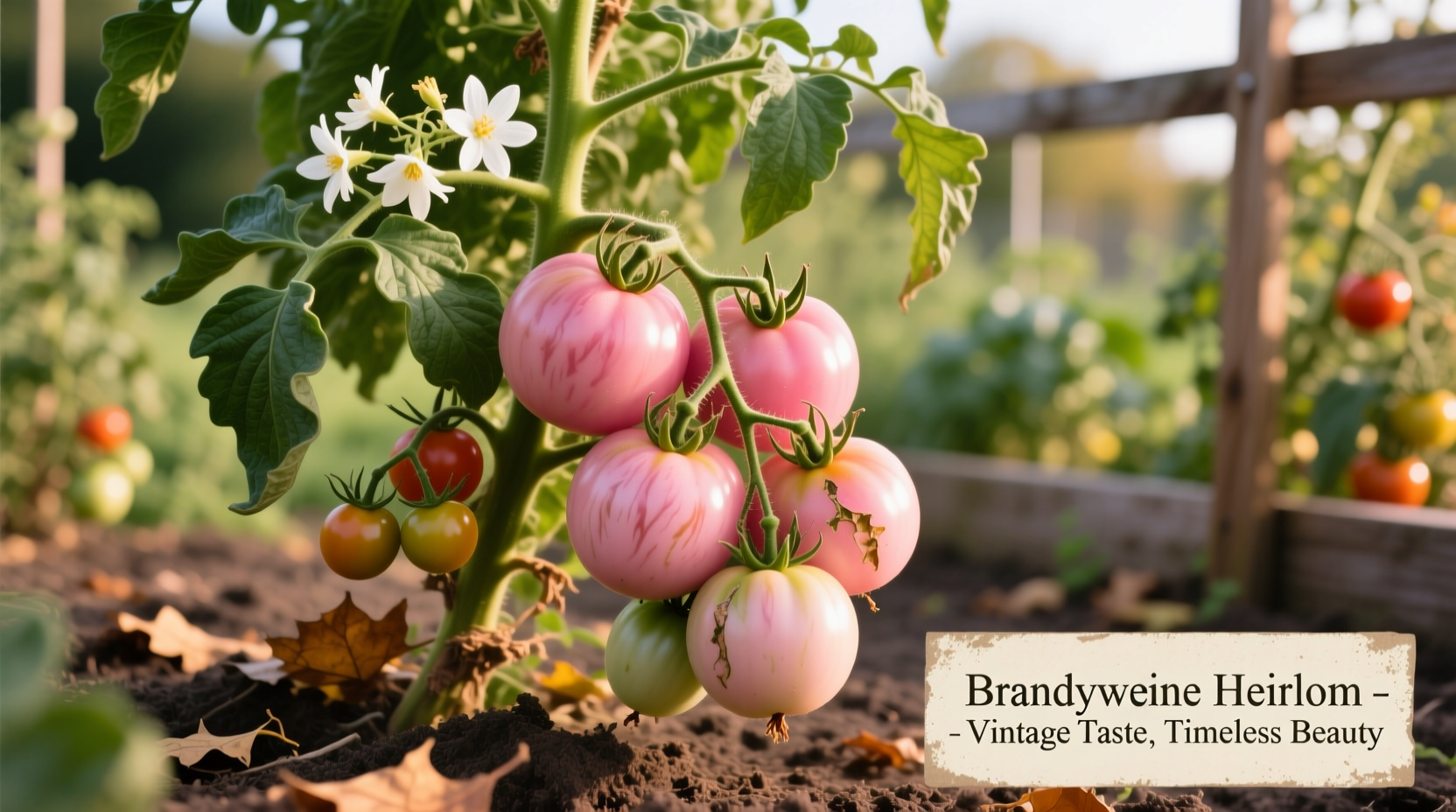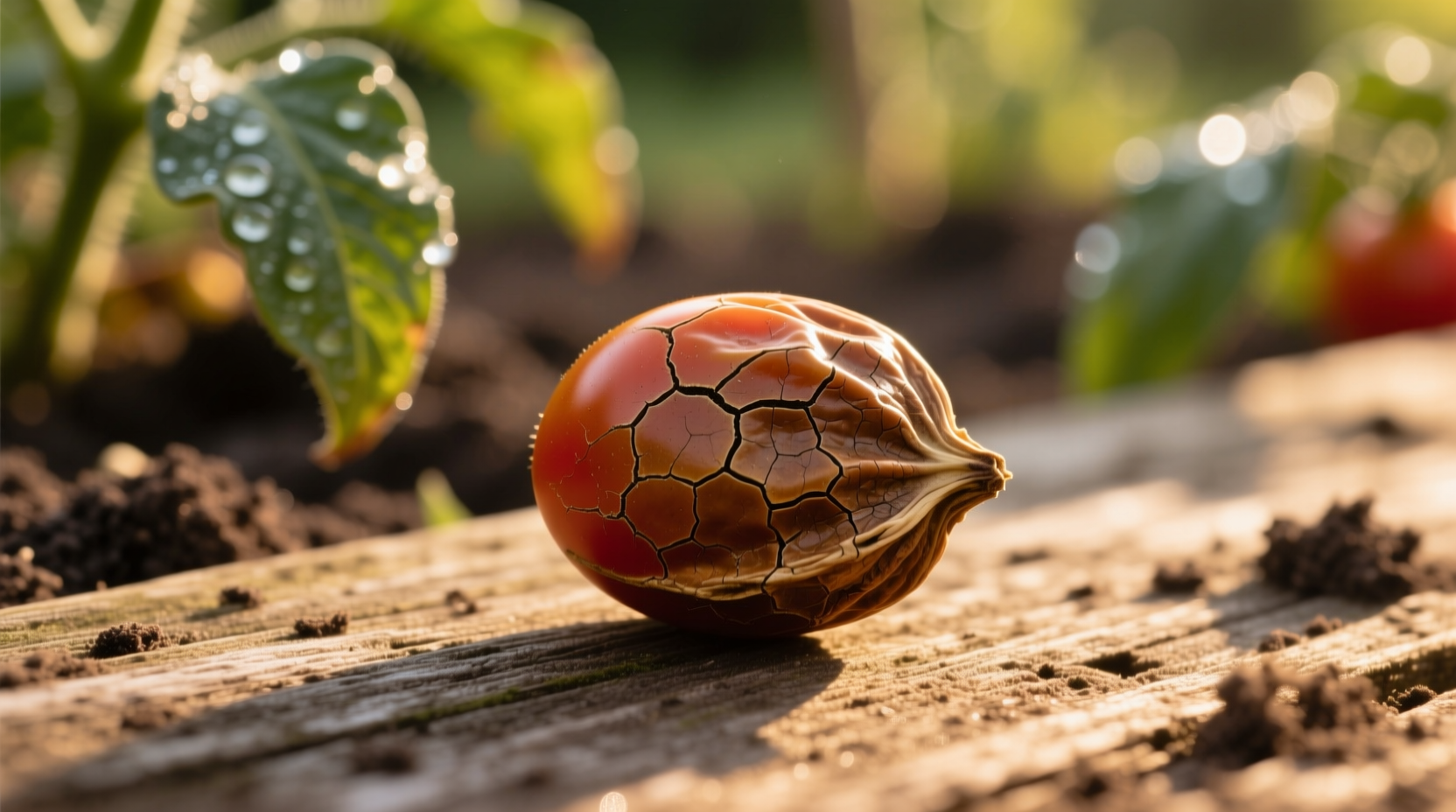Why Gardeners Choose Brandywine Tomato Seeds
When you select Brandywine tomato seeds, you're choosing one of the most celebrated heirloom varieties for exceptional flavor. These seeds produce plants that deliver that classic "tomato taste" many modern hybrids have lost through selective breeding for commercial production. The large, beefsteak-style fruits typically weigh 1-2 pounds with a distinctive pink color and ribbed appearance.
Gardeners consistently rank Brandywine at the top for flavor complexity, featuring a perfect balance of sweetness and acidity with subtle earthy undertones. Unlike many supermarket tomatoes, Brandywine tomatoes develop their full flavor profile when vine-ripened, making them ideal for home gardeners who prioritize taste over shelf life.
| Variety | Days to Maturity | Flavor Profile | Disease Resistance | Fruit Size |
|---|---|---|---|---|
| Brandywine | 80-100 | Rich, complex, balanced sweet-acid | Low | 1-2 lbs |
| Early Girl | 50-60 | Mild, slightly sweet | High | 6-8 oz |
| Cherokee Purple | 75-85 | Sweet, smoky, complex | Moderate | 10-12 oz |
| Roma | 70-80 | Mild, less acidic | Moderate | 2-4 oz |
This comparison shows why Brandywine stands out for flavor enthusiasts despite requiring more careful cultivation. While modern hybrids like Early Girl offer disease resistance and earlier harvests, they sacrifice the complex flavor profile that makes Brandywine a favorite among tomato connoisseurs.
The Historical Journey of Brandywine Tomatoes
Understanding the history of Brandywine tomato seeds reveals why they've maintained popularity despite modern breeding advances. The Brandywine story begins in the late 19th century with the Amish community in Pennsylvania, though its exact origins remain somewhat mysterious.
- 1885 - First documented appearance in the Johnson & Stokes seed catalog as "Brandywine"
- 1925 - Mentioned in the Burpee catalog with description of its large, pink fruit
- 1940s-1970s - Nearly disappears from commercial cultivation as industry shifts to uniform hybrids
- 1980s - Rediscovered by heirloom seed savers and added to Seed Savers Exchange catalog
- 2005 - Named "All-America Selections Winner" for its exceptional flavor
- Present - One of the most popular heirloom varieties among home gardeners worldwide
According to research from the University of Minnesota Extension, Brandywine's survival is largely thanks to dedicated seed savers who recognized its superior flavor characteristics. Unlike many commercial varieties bred for shipping durability, Brandywine was preserved specifically for its eating quality.
Optimal Growing Conditions for Brandywine Tomato Seeds
Successfully growing Brandywine tomatoes requires understanding their specific needs. These indeterminate plants continue growing and producing fruit until killed by frost, reaching heights of 6-8 feet that require substantial support.
Starting Brandywine Seeds Indoors
Begin your Brandywine journey 6-8 weeks before your last expected frost date:
- Use seed starting mix in individual containers (3-4 inch pots)
- Plant seeds 1/4 inch deep and maintain soil temperature at 70-80°F
- Provide 14-16 hours of light daily once sprouted
- Transplant to larger pots when first true leaves appear
- Harden off seedlings gradually over 7-10 days before outdoor planting
Transplanting and Garden Preparation
Brandywine tomatoes thrive in well-prepared garden beds:
- Choose a location with at least 8 hours of direct sunlight
- Amend soil with 3-4 inches of compost and well-rotted manure
- Space plants 24-36 inches apart in rows 4-5 feet apart
- Bury stems up to first set of leaves to encourage strong root development
- Install sturdy supports (cages or trellises) at planting time

Managing Common Brandywine Growing Challenges
While Brandywine tomatoes offer exceptional flavor, they present specific challenges that require proactive management:
Disease Prevention Strategies
Brandywine's low disease resistance requires careful planning:
- Rotate planting locations annually (minimum 3-year rotation)
- Water at soil level to keep foliage dry (drip irrigation preferred)
- Apply mulch to prevent soil splash onto leaves
- Remove lower leaves as plants grow to improve air circulation
- Monitor for early blight, fusarium wilt, and verticillium wilt
According to the Oregon State University Extension Service, heirloom varieties like Brandywine typically have less disease resistance than modern hybrids because they haven't been selectively bred for these traits. This makes cultural practices essential for healthy plants.
Pest Management for Brandywine Tomatoes
Common pests that target Brandywine plants include:
- Hornworms: Hand-pick or use BT (Bacillus thuringiensis)
- Aphids: Spray with strong water stream or insecticidal soap
- Whiteflies: Use yellow sticky traps and neem oil
- Blossom end rot: Maintain consistent soil moisture and calcium levels
Harvesting and Enjoying Your Brandywine Tomatoes
Knowing when and how to harvest Brandywine tomatoes maximizes their exceptional flavor:
Perfect Harvest Timing
Unlike commercial tomatoes picked green, Brandywine should be harvested vine-ripened:
- Watch for full color development (pink to red depending on variety)
- Fruit should yield slightly to gentle pressure
- Harvest in morning when sugars are highest
- Cut stem with scissors rather than pulling fruit
Culinary Applications for Brandywine Tomatoes
Brandywine's complex flavor shines in simple preparations:
- Slice thickly with salt and fresh basil for classic tomato sandwiches
- Add to salads where their flavor can be the star
- Make fresh tomato sauce without cooking away delicate flavors
- Enjoy sliced with a drizzle of olive oil and balsamic vinegar
Unlike many commercial varieties, Brandywine tomatoes don't require long cooking to develop flavor. Their balanced acidity and sweetness make them exceptional eaten fresh, which is why they're prized by chefs and home cooks alike.
Storing Your Brandywine Harvest
Proper storage maintains Brandywine's exceptional quality:
- Store at room temperature away from direct sunlight
- Never refrigerate ripe tomatoes (destroys flavor compounds)
- Place stem-side down to reduce moisture loss
- Use within 3-5 days for peak flavor
- Process excess harvest into sauces or freeze for later use
Frequently Asked Questions About Brandywine Tomato Seeds
How long do Brandywine tomato plants continue producing?
Brandywine tomato plants are indeterminate, meaning they'll continue growing and producing fruit until killed by frost. In most climates, this means 2-3 months of continuous harvest starting approximately 80-100 days after transplanting. The plants keep growing throughout the season, requiring regular pruning of suckers to maintain productivity.
Why are my Brandywine tomatoes cracking?
Cracking in Brandywine tomatoes typically occurs due to inconsistent watering. These large-fruited heirlooms are particularly susceptible to cracking when plants experience drought followed by heavy watering or rain. Maintain consistent soil moisture by watering deeply 2-3 times weekly rather than daily light watering. Mulching heavily helps regulate soil moisture levels and prevents cracking.
Can Brandywine tomatoes be grown in containers?
Yes, Brandywine tomatoes can be grown in containers, but they require substantial space. Use a container at least 18-24 inches in diameter and depth with excellent drainage. Choose a high-quality potting mix (not garden soil) and provide a sturdy support system. Container-grown Brandywines need more frequent watering and feeding than garden-planted ones, as nutrients leach out more quickly from containers.
How do I save seeds from Brandywine tomatoes?
Saving Brandywine seeds is straightforward: scoop seeds and gel from ripe fruit into a jar, add water, and ferment for 3-5 days. The viable seeds will sink while debris floats. Rinse thoroughly and spread on paper to dry completely before storing in a cool, dark place. Properly stored Brandywine seeds remain viable for 5-10 years. Remember that Brandywine is an heirloom variety, so saved seeds will produce plants true to type.
What makes Brandywine tomatoes taste better than store-bought varieties?
Brandywine tomatoes taste superior because they're bred for flavor rather than shipping durability. Modern commercial varieties are often picked green and ripened with ethylene gas, which prevents full flavor development. Brandywine's complex flavor comes from vine-ripening, higher sugar content, balanced acidity, and the preservation of flavor compounds that many commercial varieties have lost through selective breeding for uniformity and shelf life.











 浙公网安备
33010002000092号
浙公网安备
33010002000092号 浙B2-20120091-4
浙B2-20120091-4